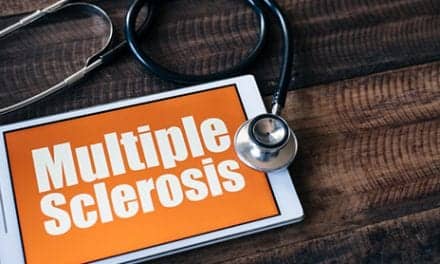Prognostic factors for benign multiple sclerosis include younger patient age, earlier disease onset, monosymptom at onset, female gender, and being at the lower end of the Kurtzke Expanded Disability Status Scale (EDSS) after 10 years of disease, according to a new 5-year study of multiple sclerosis (MS) patients meeting enrollment criteria.
Olga Shulga, MD, PhD, of the Volyn Regional Clinical Hospital in Lutsk, Ukraine, who conducted the study, presented her findings recently at the XXIV World Congress of Neurology.
She notes that 85% of patients stop working within 15 years of onset of the disease because of disability, but others have a more benign course, and they formed her study cohort.
This prospective study enrolled patients from January 2012 to January 2013 with EDSS ? 4, disease duration ? 10 years, and who were fully or partially employed. They were then followed for 5 years.
The aim was to define predictive factors and to design a prognostic model for a benign disease course, according to a media release from Medscape Medical News.
From a regional registry of all MS patients, 80 (12.6%) were enrolled in the study, of whom 74 (48 females, 26 males) completed it in 2017-2018.
The mean age was 46.45 ± 8.36 years with an age at disease onset of 30.71 ± 9.1 years. Forty-four had monosymptomatic onset compared with 30 who had multifocal symptoms. After 15 years of disease, 44 of the 74 (59.5%) had had a benign course.
Compared to baseline at study entry, at the 5-year endpoint of the study the cohort showed significantly more impairment on six of the eight functional system components of the EDSS as well as on the total EDSS score: 3.05 ± 0.85 at entry vs 3.54 ± 1.31 at year 5 (P < .001).
Based on EDSS score distributions over the 5 years, men fared worse than women (P < .035). The investigators estimated that after 5 years of follow-up, 34 of the 74 (46%) patients continued to have BMS, the release continues.
Using registry data, the investigators developed two mathematical models to predict a benign disease course. One used type of onset and age of first symptoms. It accurately predicted 74% of cases of BMS after 15 years, 63% of cases with a nonbenign course, and 68% of correct classifications for the data set as a whole.
The second model, based on differences in the eight functional systems comprising the total EDSS, appropriately classified 76.47% of cases of BMS after 15 years, 85% of cases that were nonbenign, and 81.08% for the data set overall.
Limitations of the study included that participants’ level of education was not taken into account, nor was the dependence of the employment on functional capabilities. Importantly, the investigators did not evaluate the role of immunomodulatory therapy, per the release.
[Source: Medscape Medical News]





